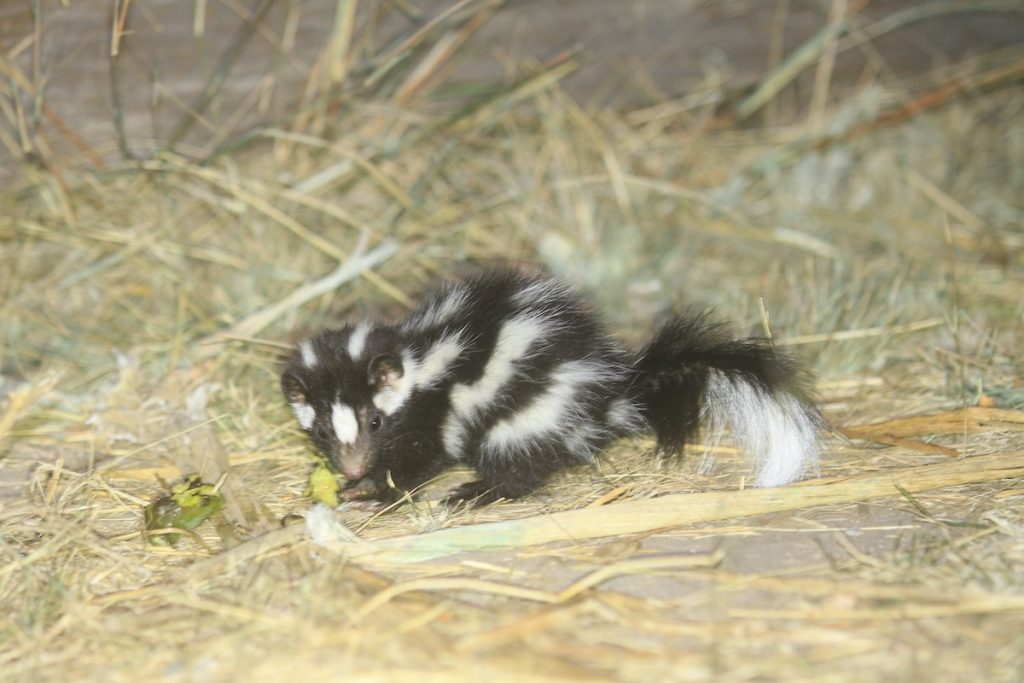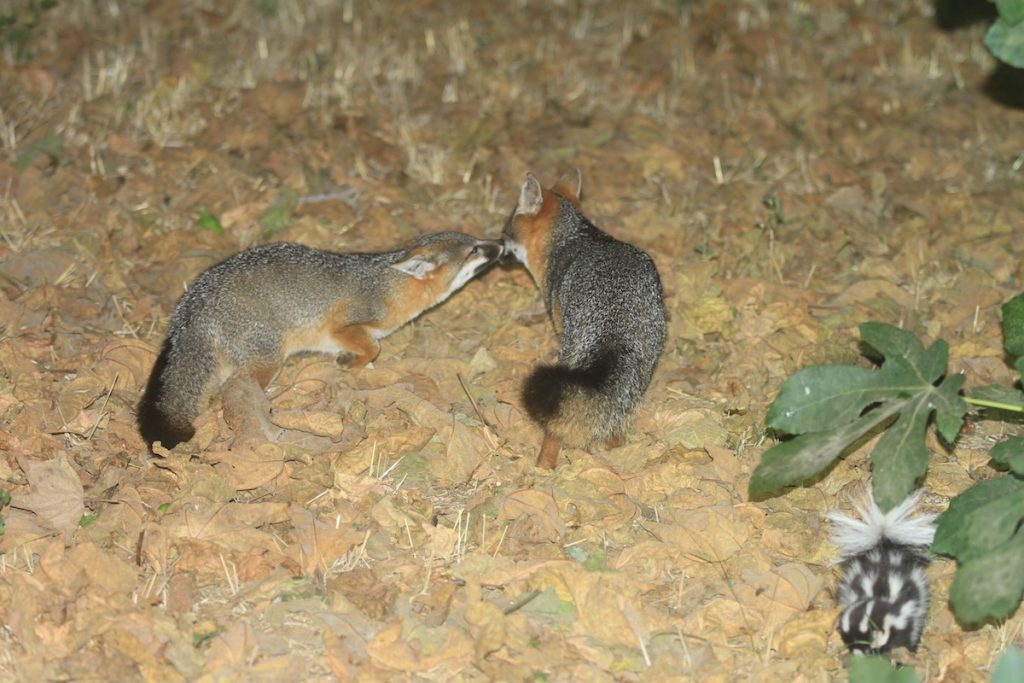Figs Falling

I needed a snack, and I had eyeballs on a girthy, ripe fig. I climbed up on the fence and balanced myself by holding onto a fig tree branch. What I didn’t notice was an island fox on the same limb, concealed in the large, clover-shaped leaves. As I reached out for a purplish-colored fig, the island fox nabbed another fig just a few inches away. Fortunately, there was way more than enough to go around on the southeast fringe of Santa Cruz Island.
In the fall of 2023, I couldn’t remember so many great tasting figs in Scorpion Canyon. The winter of 2022-23 was a rainy one, and it was followed by another wet winter in 2023-24.
I knew the fall of 2024 was going to be fruitful one on Santa Cruz Island… literally. There’s the changing of the seasons, but other signs signify a change in the ocean air. And in Scorpion Canyon on Santa Cruz Island, figs are like gold to a myriad of island fauna, including some of us kayak guides.
For about eight weeks in September and October, there’s an annual congregation around the fig trees left over from the ranching era on the largest, most biodiverse isle off the California Coast. Those few remaining fig trees are around 100 years old, but they still produce tasty figs. I’m not the only one that thinks so. I must share with all the island foxes, island spotted skunks, ravens, island scrub jays, house finches, and anything else avian that might move through Scorpion Canyon during the annual fall bird migration.
Fig Fodder
They scale the spindliest of fig tree branches with nimble, calculated motions using semi-retractable claws and a bushy tail that acts like a rudder. Island foxes, the smallest canid in North America, are fig fiends come fall. They scour the base of the trees, nabbing fruit already on the ground, but also benefit when the ravens clumsily knock figs from the highest branches.
Once the island foxes have found every ripe fig on the ground, they easily clamber up into the fig trees searching for more fruit. When they find fresh figs, they’ll either eat them right off the branches, or grab one and climb down to cache it for later somewhere in the surrounding coyote bush. They don’t have any problem at the very end of the skinniest branches. They’re incredibly nimble with their bushy tails swaying back and forth, enabling them to balance in the trees even when northwest winds are blowing over the island and down Scorpion Canyon.

This behavior around the figs goes on 24 hours a day during September and October. The fig leaves continue to fall, making it easier for the island foxes and the birds to locate the figs. As the leaves thin it’s also easier to observe them feeding on the seasonal fruit. There are three fig trees at the ranch house in Scorpion Canyon. At the back end of the lower campground are two more fig trees. Over the years, it’s also proven to be a great spot for watching island foxes ascending the highest branches.
Nocturnal Niche
Lurking in the shadows, I stepped out from behind a lemonade berry bush hoping for some nocturnal activity. Sure enough, a tiny island spotted skunk emerged from beneath an old fig tree. Cautiously curious, this little carnivore hopped toward me, went into a handstand just as it sniffed my foot, and then vanished into a thicket.
It’s the time of year to get some of the best, most consistent looks at one of the rarest, smallest carnivores on the planet. There’s only about 1,000 island spotted skunks in the world, and they’re all on Santa Cruz and Santa Rosa islands. It’s also one of the few times when I’ll see any interactions between island foxes and island spotted skunks.

Island foxes are about four pounds, and island spotted skunks weigh just over one pound. The island fox is the largest land predator across the entire national park. Still, island spotted skunks possess the spray factor. Most interactions I’ve witnessed just involved some sniffing each other from a short distance or eating figs just a couple feet apart from each species.
However, during one late fall evening, there were at least eight foxes around the fig trees, and one adult island spotted skunk. Whether the disagreement was over space or the sweetest fig, one lone island spotted skunk cleared out all the foxes. It charged toward two foxes’ side by side, went into a territorial handstand and sprayed. Really though, all the skunk needed to do was run at them. The foxes are more than aware of the consequence of being sprayed.
I’m aware of it too, but it seems like every time an island spotted skunk has approached me and went into a handstand, it always seems playful, even when they turn their back towards me. The island foxes don’t feel that. They turn and run, figs or not.







